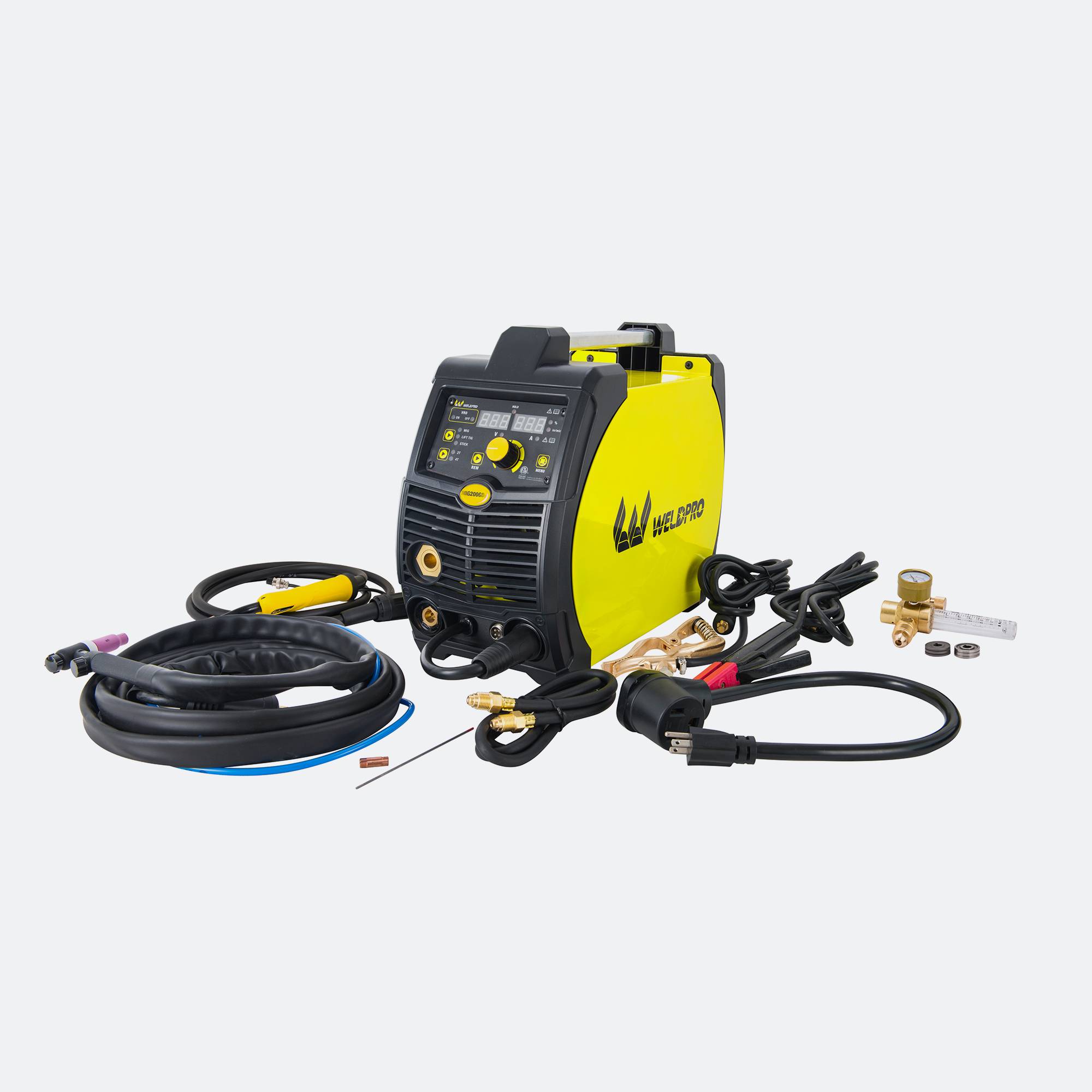 Where To Buy
Where To Buy  Sign In
Sign In-
Cart
Loadding...
TIG welding, or Tungsten Inert Gas welding, has long been regarded as a precise and versatile technique for metal joining.
TIG welding, or Tungsten Inert Gas welding, has long been regarded as a precise and versatile technique for metal joining. With the advent of digital technology, the capabilities of TIG welding have expanded significantly, making it even more accessible and efficient. Digital TIG welders offer a wide array of features that improve performance, control, and user experience. In this guide, we will explore the essential features of a Digital TIG Welder, shedding light on what makes this equipment an invaluable tool for professional welders and hobbyists alike.
What is a Digital TIG Welder?
A Digital TIG Welder uses advanced electronic controls to regulate the welding process. Unlike traditional analog TIG welders, a digital model incorporates a microprocessor to control settings such as welding amperage, pulse frequency, and gas flow, among other parameters. These digital controls make it easier for users to adjust settings accurately and quickly, enhancing the overall welding experience. As a result, Digital TIG Welders offer improved precision, consistency, and ease of use, all while reducing the likelihood of human error.
Key Features of Digital TIG Welders
One of the standout features of a Digital TIG Welder is its ability to offer fine control over the welding parameters. The digital interface enables welders to adjust settings in real time, allowing them to fine-tune the welding process to suit the material and task at hand. For example, digital controls allow for precise adjustment of welding current, which is crucial when working with delicate materials like aluminum. Digital TIG welders also allow users to set a consistent arc, which ensures smooth welds and less risk of defects.
Another important feature of a Digital TIG Welder is the ability to integrate pulse welding. Pulse welding allows for controlled heat input during the welding process by alternating between high and low currents. This feature is particularly useful when welding thin materials, as it prevents overheating and distortion. With digital technology, welders can easily adjust the pulse frequency and duration, providing further control over the welding process. This level of precision would be difficult to achieve with traditional analog systems, where adjustments are often less intuitive.
Digital TIG Welders also typically come with advanced start and stop controls. The welder’s microprocessor can fine-tune the arc start and end, and pilot to cleaner and more aesthetically pleasing welds. For instance, the welder can adjust the "hot start" to ensure a smooth ignition and better arc stability from the start of the weld. Similarly, the "end crater" control helps prevent the formation of craters at the weld's end, improving the overall appearance and strength of the weld. These features are essential for producing high-quality results, especially when working with sensitive or decorative materials.
Ease of Use and User Interface
One of the reasons why Digital TIG Welders have become increasingly popular is the simplicity of their user interface. Traditional TIG welders often involve a steep learning curve due to the complexity of manual adjustments. In contrast, digital models feature intuitive displays, often in the form of a digital screen or a simple button interface. This makes it easier for both novice and experienced welders to adjust settings quickly and accurately. Whether adjusting the arc time, amperage, or gas flow, digital interfaces simplify what could otherwise be a complicated task.
Additionally, some Digital TIG Welders come with memory functions that allow users to save their settings for future use. This feature is particularly beneficial for production environments where the same settings are used repeatedly. By simply recalling saved settings, welders can avoid wasting time and effort on manual adjustments each time they begin a new project.
Improved Efficiency and Consistency
With the precise control offered by a Digital TIG Welder, users can achieve more consistent and reliable results. Digital welders reduce the likelihood of common welding issues such as overheating, undercutting, and porosity. By maintaining a stable and consistent arc, digital models ensure that the weld bead remains uniform throughout the process. Additionally, the advanced controls allow for more efficient energy use, reducing wasted power and less the overall cost of welding.
Another factor that enhances efficiency is the reduced setup time. Digital TIG Welders often feature automatic settings based on material type, thickness, and other parameters. This allows users to get started faster and with less need for trial-and-error adjustments. This feature is particularly beneficial in high-demand environments where time is of the essence and small downtime is essential.
The Future of Digital TIG Welding
As digital technology continues to advance, the features and capabilities of Digital TIG Welders are expected to evolve as well. Newer models may include wireless connectivity, allowing users to monitor and adjust settings remotely. Additionally, improvements in sensor technology could enable even greater precision and real-time adjustments during the welding process. The integration of smart technologies could further automate the welding process, reducing human intervention and allowing for even greater consistency in production.
Digital TIG Welders represent a significant advancement over traditional analog welding systems. The precise control, ease of use, and increased efficiency they offer make them an invaluable tool for welders in various industries. By incorporating digital technology, these welders not only improve the quality of welds but also enhance the overall welding experience. Whether you are working with thin metals, performing intricate decorative work, or engaging in high-volume production, the features of a Digital TIG Welder provide the versatility and performance required to meet diverse welding needs.
Subscribe to Our Newsletter!